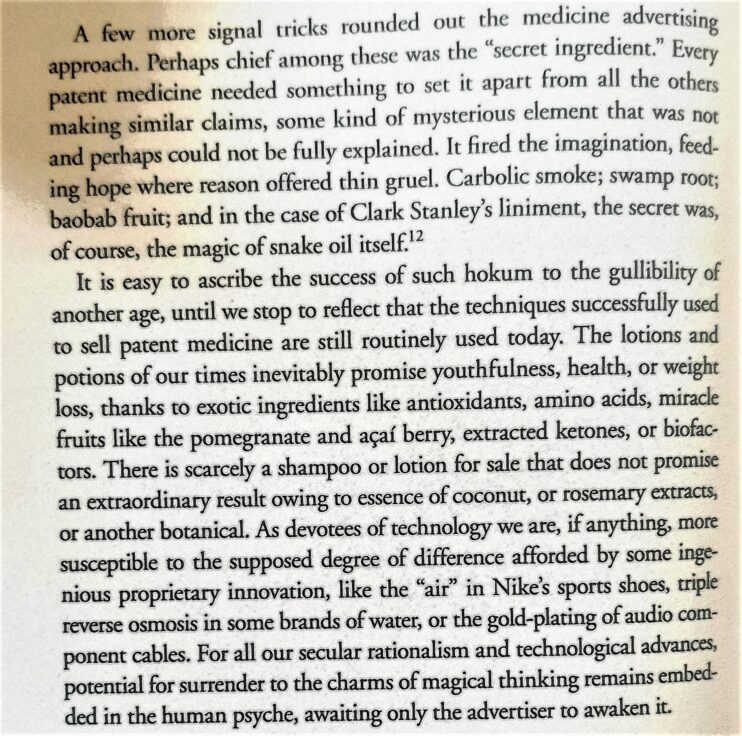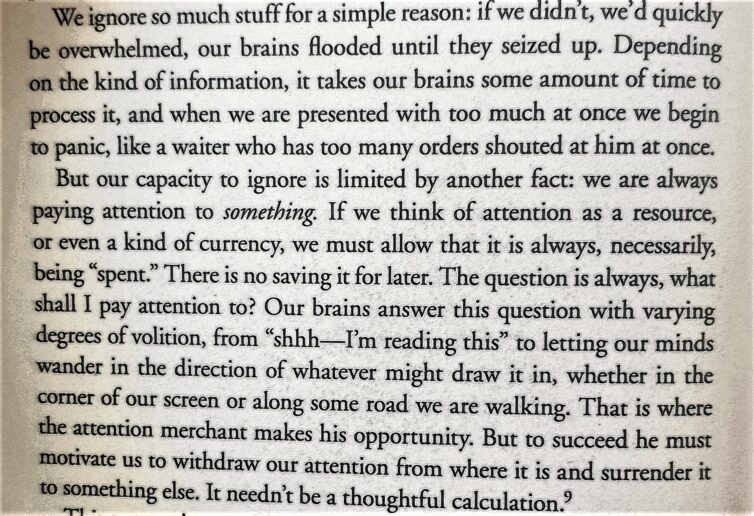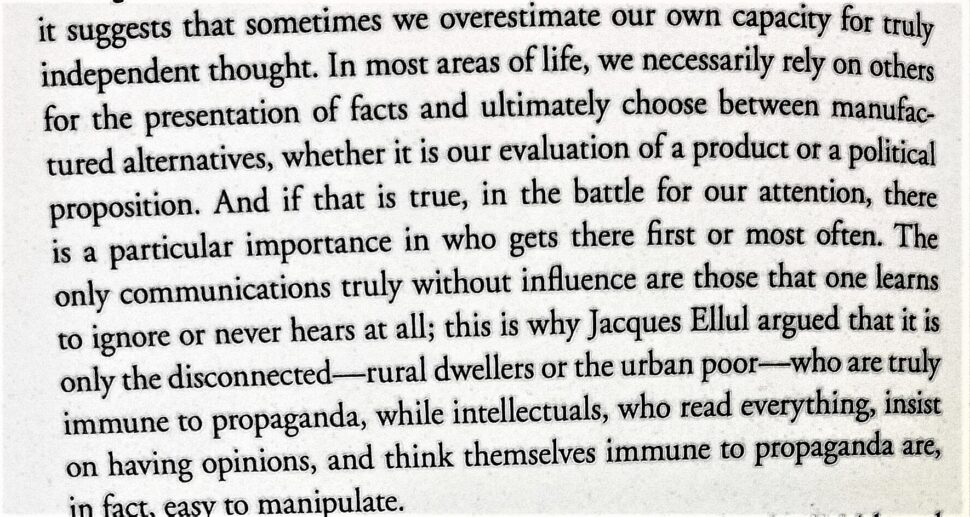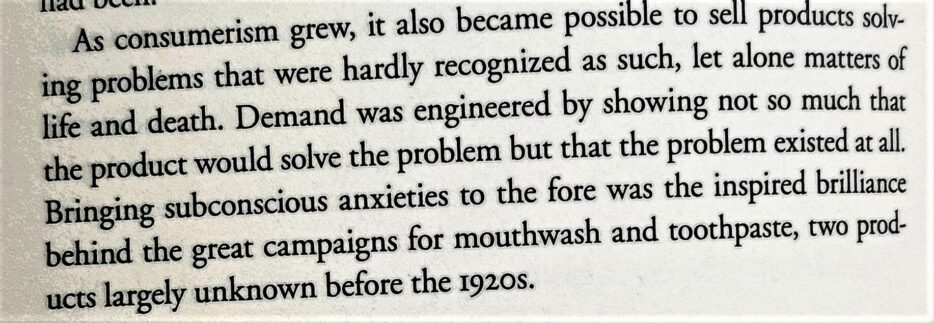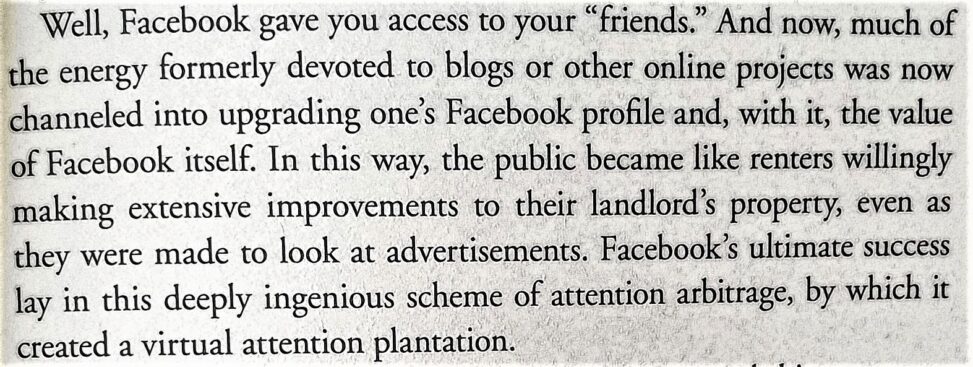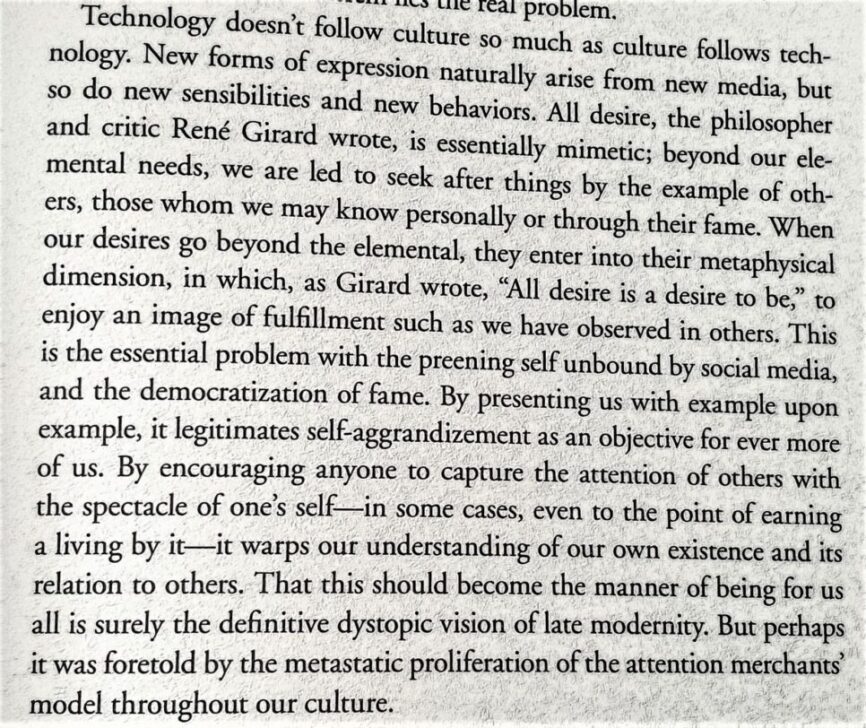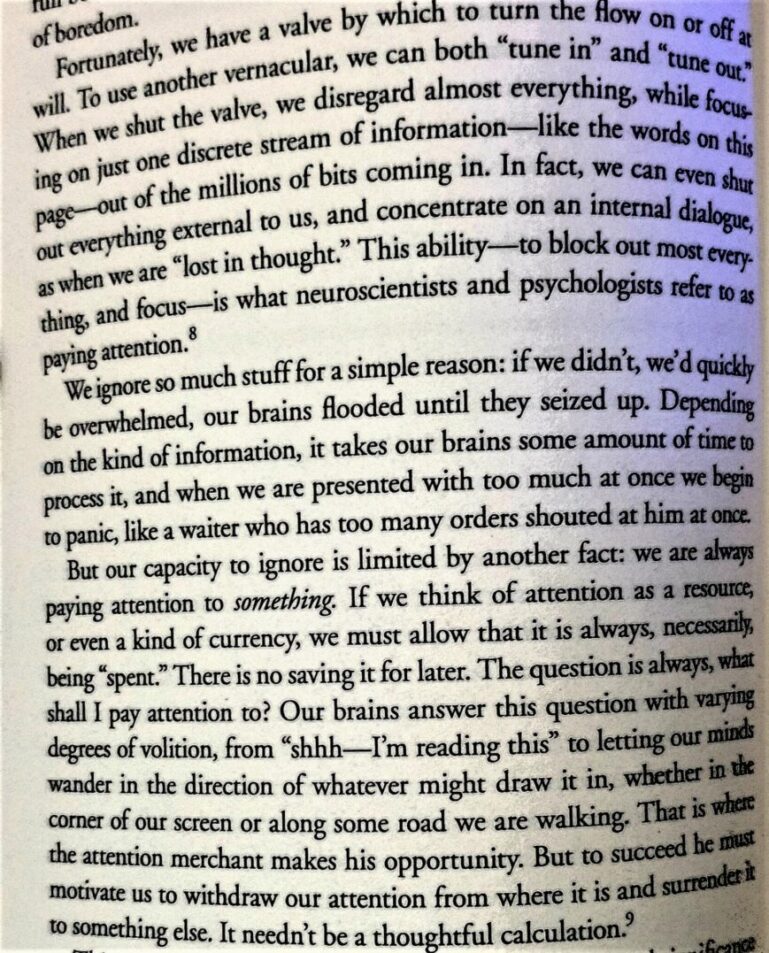Ages before William James concluded that our life experience would ultimately amount to whatever we had paid attention to, an ancient text had deduced that one needed to guard his/her heart with all diligence because out of it flowed the issues of life. If what we pay attention to has a lasting effect on the quality of our lives then systems that manipulate and trade in large scale attention harvesting are worthy of examination.
In The Attention Merchants, Tim Wu elegantly and sweepingly provides a historic tour of attention harvesting by various media. Starting in the summer of 1883 when Benjamin Day began publishing The New York Sun. A newspaper that was sold for a penny (which was the going rate for most everyday items). At such a low price, he amassed a huge readership and made a business decision to devote a section of the paper to advertisers who were impressed by the reach of their product placement. This was the genesis of attention harvesting – as readers who were buying the paper were actually products themselves in the larger scheme of things. Benjamin Day might have been a pioneer but nowhere else was the attention of people harvested in mass like during the first world war in 1914. Facing a war in which they were greatly outnumbered, the British embarked on an unprecedented public campaign via billboards, posters and adverts in newspapers. 54 million posters were printed and before the end of the war in 1916. Not only was attention grabbed but the relentlessness forced the attention harvested to lead to unprecedented decisions (of life and death).
The 1914 first world war will be the first time that government harvested attention for the sake of questionable propaganda but it sure will not be the last. What government could do by fiat, individuals and businesses do slyly but certainly as relentlessly in the name of advertising. The ultimate aim of businesses is to capture attention as a means of increased consumption.
While the scale of attention harvesting by attention merchants is currently unprecedented, pushbacks are also not a new phenomenon; from the investigative report against patent medicine dealers (they were some of the greatest advertisers in the 1900s print media) to the remote control that was invented in the 1950s (in a bit to take back control) to the adblockers of today. There has always been a pushback to draw boundaries around the invasiveness of attention merchants into the lives of consumers. Social media may be ubiquitous in today’s word and more daring in its bid for our attention but The Attention Merchant rightly questions the attentional barters that pervade modern life and how the lopsided nature of the exchange impacts our lives to a degree that we are often oblivious of. It is a profoundly important and well-written book that discusses the currency of the information age in a very lucid manner. Some of the narratives might be too drawn out and America-centric but in all, it is an excellent read.
3.9/5

